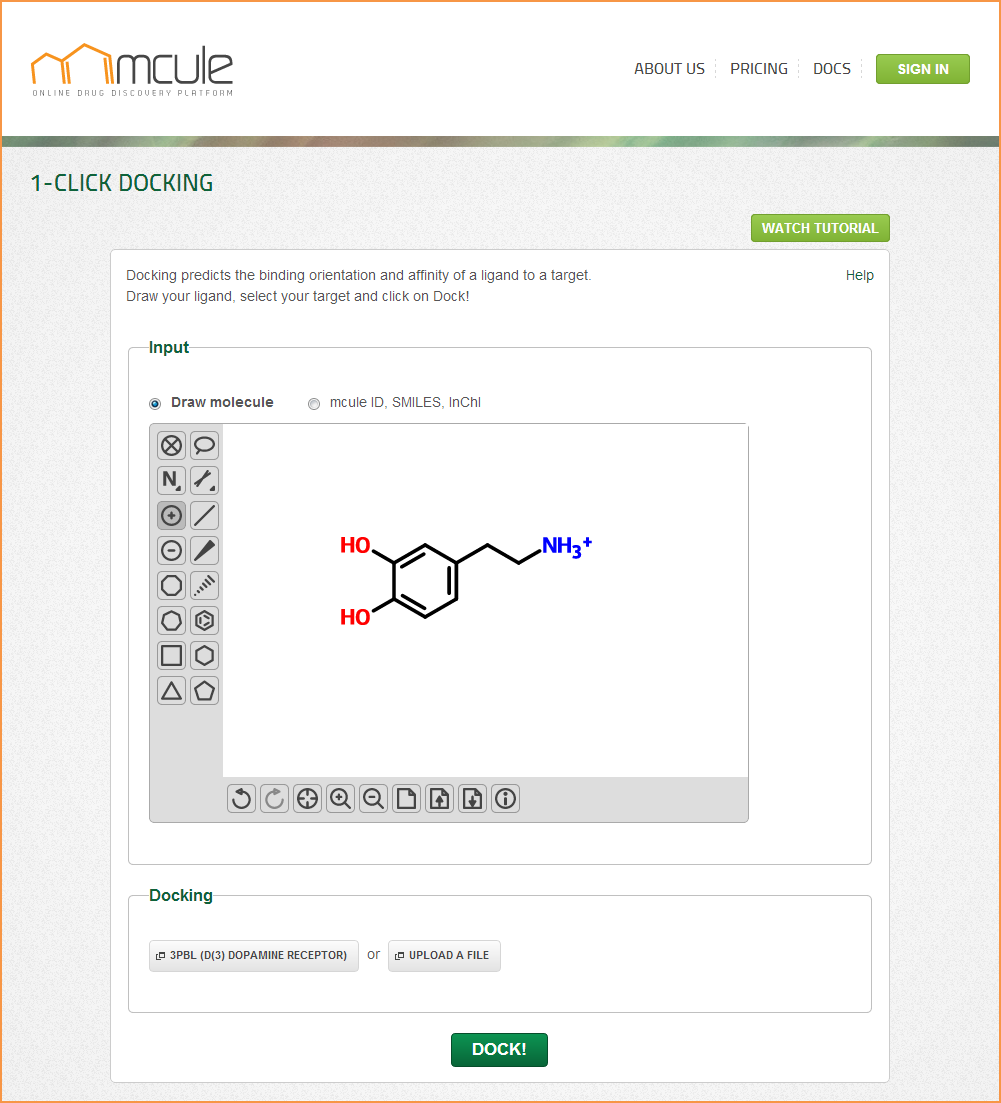This is an old revision of the document!
Table of Contents
1-Click Docking
“Molecular docking has never been easier!”
Docking predicts the binding orientation and affinity of a ligand to a target. 1-Click Docking is the easiest molecular docking solution online.
When to use
When you are looking for the binding mode or docking score of a particular ligand, 1-Click Docking is an ideal solution to start with. It typically gives you good insights about how your ligand can bind to the target: what critical interactions it forms at the binding site. One step forward is to use the Docking (Vina) filter and dock multiple ligands into a single target.
How to use
1-Click Docking is extremely easy to use: draw your input ligand, select your docking target and click on Dock!
Results
The best binding poses are listed together with their docking scores. More negative values indicate higher binding affinity. Binding poses can be displayed (“Visualize pose” button) and downloaded (“Download pose” button).
For 3D visualization we use the WebGL/Javascript based molecule viewer of GLmol. If you experience any problems or your target is not displayed as it is shown on the Figure, you should verify that your browser supports WebGL, or you need to enable it manually. We suggest to use the latest version of Chrome or Firefox to get the highest level user experience.
Docking protocol
1. Conversion of input ligands defined by mcule IDs, SMILES or InChI strings to 2D SDF
For mcule IDs 2D SDF files are associated during our structure registration. To ensure that molecule conversion did not affect the identity of the molecule, InChI strings of the input ligand and output conformer are compared and in case of InChI mismatch, the results are not displayed.
2. Generation of defined stereoisomers
Unknown or undefined tetrahedral stereocenters and cis-trans double bonds are converted into well-defined centers and double bonds by the stereoisomer generator of mcule.
3. Conversion of ligand 2D SDF to 3D SDF
Conversion is carried out by OpenBabel. To ensure that molecule conversions did not affect the identity of the molecule, InChI strings of the input ligand and output conformer are compared and in case of InChI mismatch, the results are not displayed. If the conformer generation fails due to InChI mismatch, another defined stereoisomer is generated in step 2 (if possible).
4. Conversion of ligand 3D SDF to PDBQT
Input ligands has to be converted to pdbqt format by using AutoDockTools (prepare_ligand4.py) with default parameters.
5. Preparation of docking targets
Nearly 10,000 target structures integrated from the sc-PDB database (Meslamani J, Rognan D, Kellenberger E. Bioinformatics. 2011, 27, 1324-6) have been automatically prepared by AutoDockTools (prepare_receptor4.py) using default options, except:
[-e]: delete every nonstd residue from any chain
Uploaded targets can be subjected to automatic preparation (as described above).
Otherwise, PDBQT files are generated by the following options:
-A “None” (do not make any repairs) -C (preserve input charges ie do not add new charges) -U “None” (no clean-up)
6. Docking with AutoDock Vina
To ensure that molecule conversions did not affect the identity of the molecule, InChI strings of the input ligand and output conformer are compared and in case of InChI mismatch, the results are discarded.

